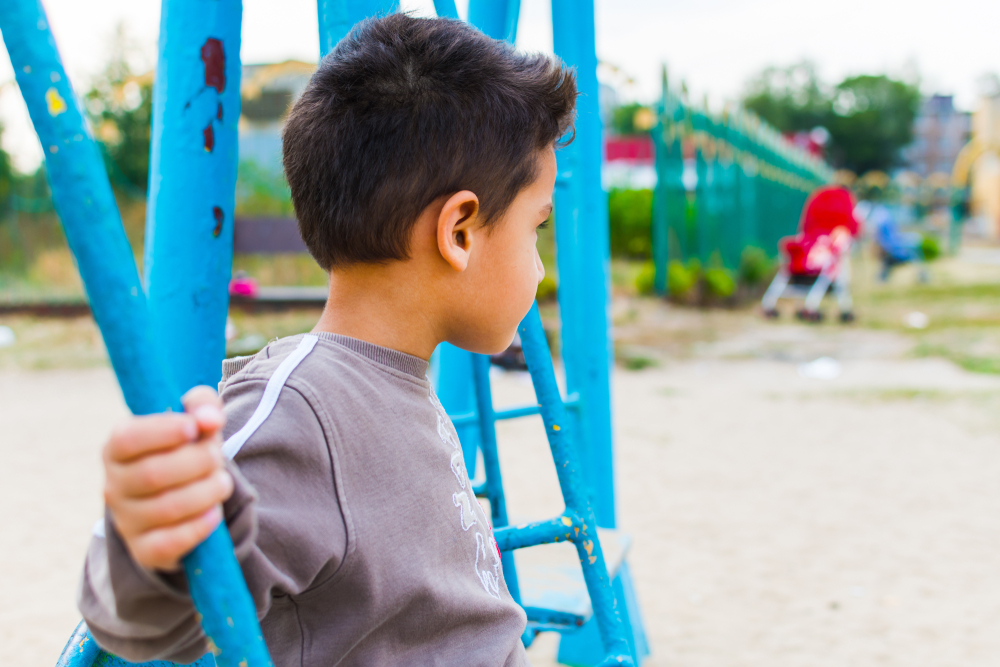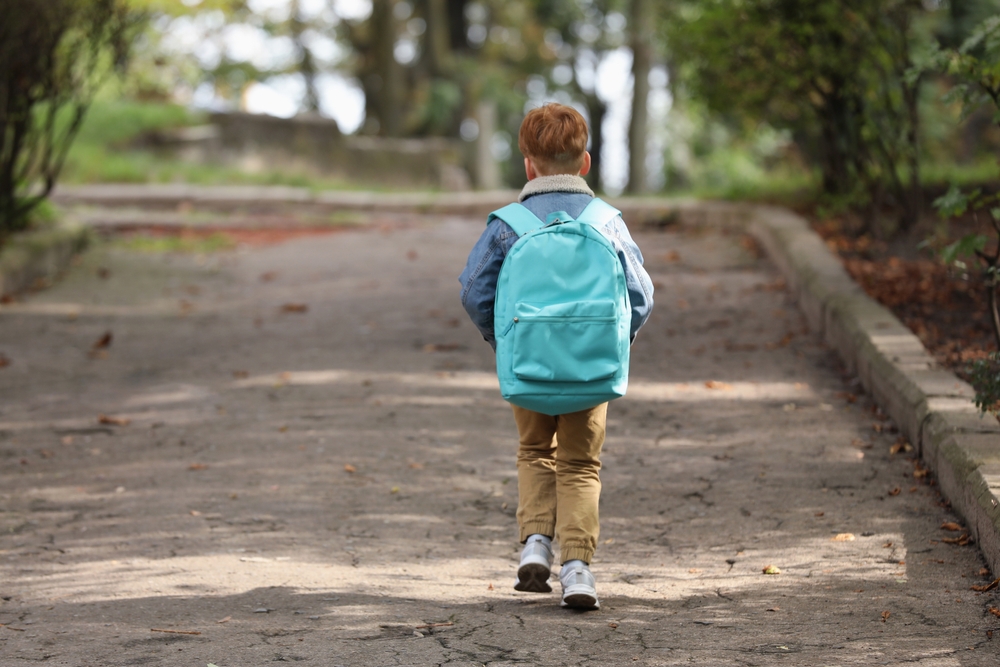Your cart is currently empty!
A 12-Year-Old Boy Went Viral for Eating His Classmates’ Leftovers So He Could Save His Free School Lunch for His Disabled Mother. His Selfless Act Sparked Donations and Calls for Government Action. Now, This is His Story.

Imagine being 12 years old and thinking less about your own hunger and more about your mother’s. While classmates scrape trays and toss leftovers, one boy quietly collects what remains—not out of greed, but out of love. He’s saving his free school lunch, not for himself, but for his disabled mom who can’t always afford to eat.
In a world where viral moments often revolve around pranks or trends, this boy’s act of quiet sacrifice struck a far deeper chord. It wasn’t flashy. It wasn’t performed for a camera. Yet, when the story surfaced, it captured hearts and raised a mirror to the unseen burdens many children carry—and the stark realities of poverty in one of the wealthiest nations on earth.
What followed was a groundswell of support, but also a chorus of difficult questions: Why was a child put in this position to begin with? How many other families survive by the sacrifices of their youngest members? And what does it say about the systems that are supposed to protect them?
This is more than a story of a boy and a lunchbox. It’s a story of love, dignity, and a society at a crossroads.
The Story That Touched Millions
He didn’t seek praise. He didn’t tell anyone what he was doing. But when school staff noticed a young boy consistently eating the untouched remnants of his classmates’ lunches, they grew concerned. What they learned would stun them—and soon, the internet.
The 12-year-old, whose name was later shared publicly with his family’s consent, was taking advantage of leftovers not out of wastefulness or hunger alone, but because he had a plan: to take his own free school lunch home each day, carefully wrapped and saved, so his disabled mother would have something to eat.

Their household, stretched by medical bills and limited income, couldn’t always afford groceries. His mother, living with a chronic illness and unable to work, often skipped meals to ensure her son was fed. Without complaint, the boy had taken it upon himself to ease her burden in the only way he could—by sacrificing his own comfort to make sure she didn’t go hungry.
He never told his teachers. He didn’t tell his friends. He wasn’t trying to be a hero. But when the school eventually learned the reason behind his behavior, they were moved to tears. Staff shared the story—first in hushed tones, and later, with the family’s permission, publicly. From there, the story exploded across social media, where thousands were stunned not just by the boy’s ingenuity and heart, but by the painful reality that had made it necessary.
What touched people most wasn’t just his sacrifice—it was his calm, uncomplaining approach to it. He hadn’t asked for help. He hadn’t even seen what he was doing as extraordinary. In his mind, it was simple: his mother had cared for him all his life. Now, he had the chance to do the same.
When Children Become Caregivers

What makes this boy’s story both heartwarming and heartbreaking is its ordinariness. While his quiet act of devotion captured headlines, the reality behind it is all too common—millions of children across the world are stepping into caregiving roles far beyond their years.
In the United States alone, an estimated 3.4 million children under 18 live in households where they help care for a parent or family member with a disability or chronic illness, according to a report by the American Association of Caregiving Youth. These young caregivers often perform tasks such as cooking, administering medication, or even managing household finances—all while attending school and trying to maintain a semblance of childhood.
The emotional toll is profound. Pediatric psychologists have found that children in caregiving roles are more likely to experience anxiety, depression, and academic challenges. Dr. Connie Siskowski, founder of the Caregiving Youth Project, notes that “when children are made responsible for adult duties in unstable conditions, they carry stress loads that their brains and hearts aren’t yet equipped to manage.”
The boy who saved his lunch for his mother was not just being generous—he was filling a gap left by fragile social safety nets. In low-income households, where access to healthcare, disability benefits, and food assistance is often limited or inconsistent, children frequently become the first line of support. And while their actions can be inspiring, they shouldn’t be necessary.
Poverty doesn’t just steal material resources—it reshapes childhood itself. It replaces play with worry, spontaneity with responsibility. And in many cases, it forces children to choose between their own well-being and that of the people they love most.
How the Internet Responded

The story of the 12-year-old boy’s selflessness didn’t just tug at heartstrings—it mobilized people. Once the details emerged, the online response was immediate and overwhelming. Social media users shared the story by the thousands, flooding comment sections with offers to help, messages of solidarity, and pleas for systemic change.
A local nonprofit, alerted to the situation through a viral Facebook post, reached out to the boy’s family to offer support. Within days, a crowdfunding campaign was launched—not by the family, but by concerned community members who felt compelled to act. The campaign quickly raised thousands of dollars to help the family afford groceries, cover medical bills, and access other basic necessities.
More significantly, the story reignited a broader public conversation about school lunch inequality and the hidden hunger that persists in many American households. Parents shared their own experiences of relying on school-provided meals not just for their children, but to help stretch food budgets at home. Teachers described their daily efforts to quietly cover students’ lunch balances or bring snacks from home for those who came to school hungry.
One particularly poignant response came from a retired cafeteria worker who wrote in a public letter, “I’ve seen this before—kids giving up their lunches or pretending they’re not hungry. This story brought it all back, and it’s time we stop making kids feel like they have to fend for their families.”
In response to the outpouring of support and attention, some local school districts reviewed their lunch debt policies. A few even took steps to ensure students could bring meals home when needed, or expanded access to after-school meal programs. In a striking example of individual action, a community member in a neighboring town donated enough to pay off every student lunch debt in that district, citing the boy’s story as the reason.
What This Story Reveals About Systemic Gaps

Behind the emotional weight of this story lies an uncomfortable truth: no child should have to make such sacrifices in the first place. The boy’s decision to save his lunch for his mother was an act of compassion—but also a symptom of deeper, systemic failures that leave too many families on the edge of survival.
Despite federal programs like the National School Lunch Program (NSLP) and the Supplemental Nutrition Assistance Program (SNAP), food insecurity remains a persistent problem in the United States. According to the USDA, over 13 million children lived in food-insecure households in 2022, many of them relying on school meals as their most consistent source of nutrition. Yet these programs often assume that children are the only ones in need, overlooking the interdependence within families—especially those affected by disability or chronic illness.
In the boy’s case, his mother, unable to work due to her condition, fell into a common policy blind spot. Disability assistance is notoriously difficult to access, and benefits—when approved—are often not enough to cover the costs of rent, medication, and food. Meanwhile, school lunch programs typically stop at the cafeteria door, offering no mechanism for children to bring surplus food home, even when it could feed hungry family members.
This rigid separation between aid for children and support for adults ignores the reality of how families operate. As a result, children like this boy are left to bridge the gap themselves—turning lunch trays into lifelines and leftovers into love letters.
Experts have long called for reforms that better reflect the interconnected nature of poverty. Proposals include expanding after-school meal distribution, increasing SNAP benefits for households with disabled members, and revisiting punitive lunch debt policies that stigmatize students. But progress has been slow, often stymied by political gridlock and budget constraints.
This boy’s story doesn’t just spotlight generosity—it exposes neglect. It forces a reckoning with how many children live in quiet crisis, navigating adult responsibilities in systems that were never built with them in mind. Until those systems are reimagined to meet families where they are, stories like his will remain all too common.
What We Can Learn and Do
The boy who quietly saved his lunch so his mother wouldn’t go hungry didn’t ask for attention. But his story has become a rallying cry—not just for charity, but for reflection. It reminds us that compassion isn’t just an emotion; it’s a choice, a behavior, and often, a responsibility.
For readers moved by his selflessness, the next step is clear: turn empathy into action. That action can begin close to home. Schools, for instance, are often ground zero for spotting food insecurity. Parents, educators, and community members can advocate for more flexible meal programs that allow students to take food home or access meals during school breaks—an approach already being piloted in several districts across the country.
On a broader scale, supporting or donating to organizations that tackle food insecurity—like Feeding America, No Kid Hungry, or local food banks—can directly impact families in need. Even small monthly contributions can help provide consistent support. Volunteering time, whether packing meals or tutoring students in under-resourced communities, is equally valuable.
There’s also power in raising awareness. Sharing verified stories like this one can shift public sentiment and influence policy. Contacting lawmakers to support legislation that strengthens safety nets for families dealing with disability and poverty—such as expanded SNAP benefits or universal free school lunches—can contribute to lasting change.
But perhaps most importantly, this story challenges us to look more closely at the people around us. Is there a child in your neighborhood who always seems a little too hungry? A single parent quietly struggling? A classmate who never eats lunch at school? As Josette Duran, the mother in a similar viral story, once said, “Being kind doesn’t have to come in monetary form. Just know that if you’re having a good day, someone else is having a bad day—and you can fix that.”
In a world often overwhelmed by headlines of division and hardship, this boy’s act reminds us that the most profound change often starts with a simple question: Who needs help today, and what can I do?
